2018 Dodge Durango SRT Vs Chevrolet Tahoe RST

It seems today anything can be considered “sporty” even big SUVs. It’s led to the development of the two vehicles we have here, the Dodge Durango SRT and the Chevy Tahoe RST. Two giant, heavy, three-row crossovers that are somehow inspired by performance.
In reality, it’s hard to imagine either of these cars behaving anywhere near the benchmark of a true sports car, but it’s better to play along, because it gives us access to some loud and enjoyable engines, not to mention a feeling of “boss-ness” on the road.
The Tahoe when equipped with the RST package, certainly doesn’t look all that sporty or aggressive. The only hint that this is different from the average SUV is the use of black badges, body colored grille surrounds and handles as well as unique 22-inch wheels wrapped in Bridgestone rubber. It’s a handsome looking truck, but nothing that looks radically cooler or more interesting than the normal models. If desired, buyers can get upgraded brakes and a Borla exhaust system, which would help a bit in differentiating this Tahoe from others, but it was pretty much a sleeper in terms of looks.
The Durango SRT, on the other hand, looks hellish and angry. It’s a tough looking vehicle with a big hood scoop, two functional heat extractors, and large exhaust exits. You can tell almost right away that this isn’t a normal Durango, but other cues help, like the giant Brembo brakes and Pirelli Tires.
Interiors
Inside, it’s a similar story. While the Tahoe is much bigger and more accommodating, it has a boring cabin. There are no sporty accents, no indication that you’re in something other than a normal SUV from the bowtie badge. Although the materials look dated, there are a few modern touches, like a digital dash, a head-up display and Android Auto and Apple Car Play support. There’s also a rear-seat entertainment system with headphones so kids and passengers can enjoy their media in peace.
The Durango has showmanship. Bright red colors and aggressive text litter the cabin. Everywhere you look, there’s a reminder that you’re in a car catering to adults with fully active inner-children. While it doesn’t have as much space as the Tahoe, it has many of the same features. A fairly large digital screen is found in front of the driver, and Dodge has one of the better infotainment systems in the industry. It too has a rear-seat entertainment system, with two screens and headphones… but using it may be a bit more difficult.
Here’s the thing about the Durango SRT, it’s very loud. Not loud in a bad way, just loud in that giggle-inducing way a 6.4-liter V8 is. It barks, roars, burbles, burps and makes all manners of rude noises everywhere it goes. The volume on those rear seat entertainment units will be cranked, but regardless of whether there’s actually anything playing or not, people will be entertained.
Under the Hood
That’s because the true joy of these trucks is what’s under the hood. The Tahoe’s RST package is the only way to get a Corvette-related 6.2-liter V8 engine in this vehicle, even if it’s an optional add-on to the package. The Durango SRT gets a wild 6.4-liter V8 that’s seen duty in all other SRT vehicles from Dodge, Chrysler, and Jeep.
The Tahoe’s engine is smooth and impressive, with 420 hp and 460 lb-ft of torque. Considering the normal engine for the RST is the 5.3-liter that makes 75 fewer ponies, it’s a no-brainer to upgrade to the 6.2. Highway speeds pop up in under 6 seconds, which is pretty impressive considering the size of this SUV. A major part of the vehicle’s success though is the 10 speed automatic, a gearbox that was co-developed with that other American automaker not taking part in this comparison: Ford. Gear changes are plentiful, as the transmission seeks to make life easier on the engine by constantly finding the best gear for acceleration, and then changing up to save fuel. The engine also has a fancy fuel-saving mode, that shuts off half the cylinders, earning a 17 MPG combined highway rating. Drivers can also choose to switch the vehicle from an auto mode, into 2WD only, 4WD high and 4WD low range too.
Unfortunately, there’s no specific Sports drive mode and nothing that attempts to tighten up some of the driving dynamics of the big SUV. The package comes standard with magnetic ride control, which does a great job of smoothing out the ride and keeping things level, but it doesn’t aid in driving feel at all… then again, this is a big SUV and it’s unlikely that the masses are looking for a stiff and harsh ride. This isn’t a race truck at all. Instead, it’s worth pointing out how capable the Tahoe RST is, as it can haul 8,100 lbs, making it more appropriate for towing your track toys.
The Durango has more spirit, with its 6.4-liter V8 making 475 hp and 470 lb-ft of torque. As mentioned before, it’s a loudmouth announcing that it’s on the move every time you move the gas pedal even an inch. It goes without saying that the Durango SRT is fast, and it feels faster than the Tahoe. Dodge boasts that “this is the fastest and most capable three-row SUV with a National Hot Rod Association (NHRA)–certified quarter-mile time of 12.9 seconds and capable of 0-60 MPH acceleration in 4.4 seconds”, which is crazy in that “we got a Guinness World Record that didn’t exist before today” kind of feat. It can also tow, slightly more than the Tahoe too, with an 8,700 lbs. limit.
Throttle response is hyperactive, and the powertrain feels very much like the Dodge Charger SRT but in a bigger body. This car features an eight-speed automatic and has paddle shifters on the steering wheel to help initiate gear changes quickly and easily. This car features an always-on AWD system, which splits the torque between the front and rear wheels 40 percent to the front axle, and 60 to the rear in the Auto mode. Different modes will change this split, with a 50/50 split in Snow and Tow mode, 35/65 in Sport and 30/70 in Track mode.
Compare Specs
| Vehicle | 2018 Dodge Durango SRT | Advantage | 2018 Chevrolet Tahoe RST |
|---|---|---|---|
| Engine | 6.4L V8 | - | 6.2L V8 |
| Output | 475 hp, 470 lb-ft of torque | Durango | 420 hp, 460 lb-ft |
| Transmission | 8-Speed Auto | Tahoe | 10-Speed Auto |
| Combined Fuel Economy (MPG) | 15 | Tahoe | 17 MPG |
| Combined Fuel Economy (l/100kms) | 15.6 | Tahoe | 13.8 |
| Cargo space (cu-ft) | 17.2 - 84.5 | Tahoe | 15.3 - 94.7 |
| Cargo space (L) | 490 - 2,393 | Tahoe | 433 - 2,681 |
| Towing Capability | 8,700 lbs | Durango | 8,100 lbs |
| Price as tested (USD) | $70,425 | Durango | $75,730 |
| Price as tested (CAD) | $82,040 | Durango | $86,995 |
Yes, this three-row vehicle has a Track setting, and there’s even a launch control system that helps the everyday driver net that 4.4-second sprint. It’s a juvenile thing, but that means it’ll make you burst out in laughter every time. The Durango also has seven different suspension settings, that range from firm to very stiff to some kind of track setting that makes every road feel like you’re driving on a cobblestone road in some small city in Europe. The good news is that this helps limit leaning and body roll when its time to push the car on an on-ramp.
The powertrain is definitely more entertaining in the Durango; not only does it sound great, but it rewards you with speed and thrills in a way that isn’t expected in a three-row vehicle. The Tahoe feels much more mundane in comparison. It sounds good too and feels smooth and refined, but the Durango just turns everyone into an automotive enthusiast with its aura of raw power. The only downside to the Durango is its fuel economy, which is 15 MPG combined, and causes PTSD when you take your wallet out at the gas pumps.
The Verdict: 2018 Dodge Durango SRT vs Chevrolet Tahoe RST
The Durango is the better choice and is pretty much the only choice if you’re looking for a sporty truck. The Tahoe RST, while a fine ride, feels like a smoothed over version of the popular Chevy SUV. The Durango is wacky, fun and feels like a family-oriented version of any other Dodge SRT product, which is very much a good thing.

Sami has an unquenchable thirst for car knowledge and has been at AutoGuide for the past six years. He has a degree in journalism and media studies from the University of Guelph-Humber in Toronto and has won multiple journalism awards from the Automotive Journalist Association of Canada. Sami is also on the jury for the World Car Awards.
More by Sami Haj-Assaad



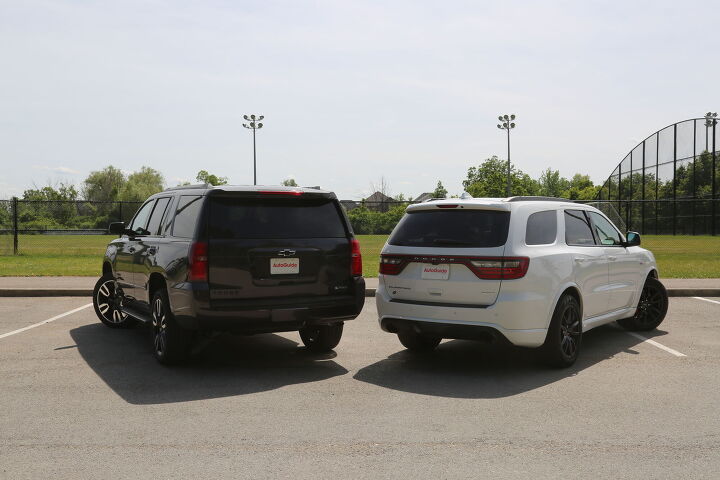
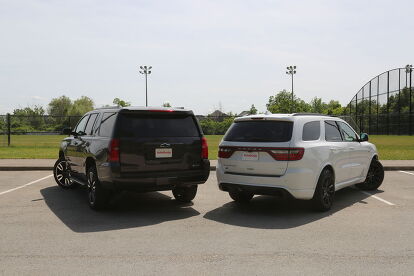













































































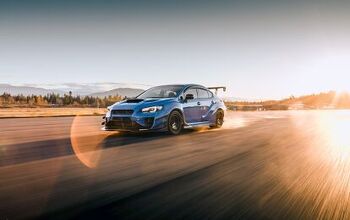
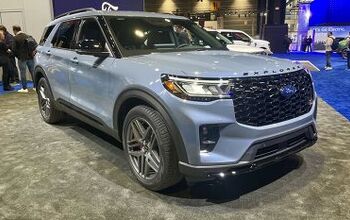
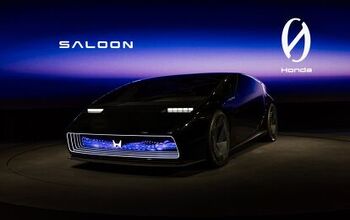
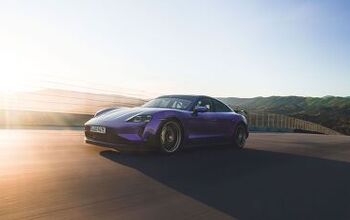

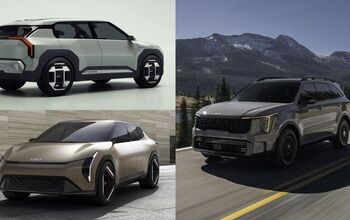



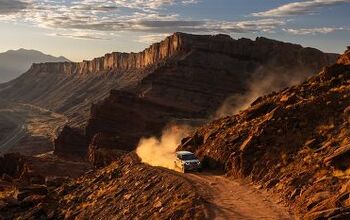
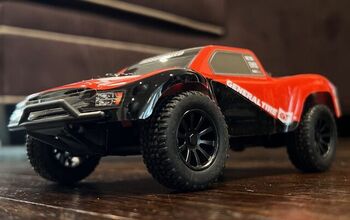


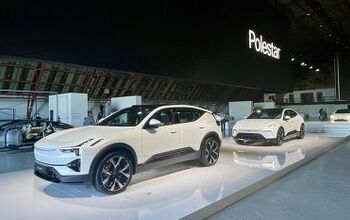
Comments
Join the conversation
yahh The Durango Is beaut and perfected
When two Americans start referring to a ZL1 as a ZedL1. I turn it off.